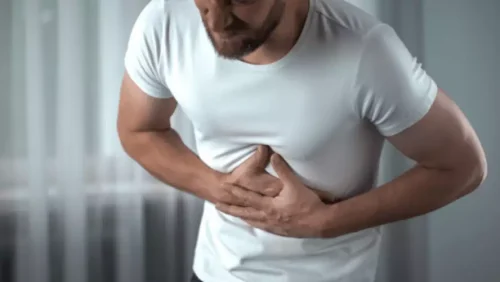
For people who develop an addiction, the effects of alcohol on the body and mind can be significant. Sometimes, the person goes this route to hide their alcoholism from others. If they’ve been told they seem to lack energy, they will look for drugs that give them energy so others will think they’re normal. They think they’re dealing with the problem, but instead the person is compounding it by adding addictive drugs to their alcohol use disorder. They may take drugs to counteract the negative effects of the alcoholism such as depression or anxiety.

How to Spot an Alcoholic Face – With Pictures
Alcoholism is considered to be a heritable disease, as NIAAA reports that genetics can account for about half of the risk for developing the disease. The flip side of this coin, however, is that environmental and other factors make up the other half of the risks for the onset of addiction. As soon as the warning signs of alcoholism have become apparent, it is best to seek treatment right away and not wait for the disease to progress further. When alcoholism starts to affect day-to-day life, an intervention is needed.
More on Substance Abuse and Addiction
- Alcohol addiction is not a choice, and CCFA explains how to spot an alcoholic face so you can help your loved one get the help they need.
- Less than 10 percent of adults in the United States who struggled with alcoholism in 2015 received professional treatment for the disease, NIAAA further reports.
- Drinking heavily for a long time has been linked to hearing loss.
- Heavy drinking is defined as 8 or more drinks per week for women and 15 or more drinks per week for men.
- Alcohol causes dehydration and can make the skin look older and wrinkled even after a single night of drinking.
She’s passionate about working with clients to work through trauma and improve mental stability. In her personal life, Karlie likes reading sci-fi and fantasy and going to Marvel movies. She enjoys playing board games and having home karaoke nights with her friends.

Severe Alcohol Use Disorder
Alcohol is also a diuretic, meaning it dehydrates you every time you have a drink. Losing valuable fluid and nutrients from your body can lead to wrinkled, dry, puffy or just generally unhealthy-looking skin. We invite you to visit Northpoint Recovery and decide for yourself if this is the place you want to go to help you reach your goal of sobriety.
- ‘Alcoholic face’ or ‘puffy face’ is a result of the dehydrating effects of alcohol.
- She specializes in mood and personality disorders as they relate to addiction and is passionate about healing trauma by way of brainspotting and other trauma therapy methods.
- When alcoholism starts to affect day-to-day life, an intervention is needed.
- To hear about actress Claudia Christian’s experience with alcoholism, watch this video.
Along with toxins from alcohol, they can cause inflammation in the organ over time, which can lead to serious damage. After years, that means you won’t be able to make the insulin you need, which can lead to diabetes. Those who drink more than 2 standard sized drinks per day, have an increased risk of inflammation due to vasoconstriction, resulting in red skin [6]. When all behaviors and health problems are taken into consideration, a doctor may determine that a person’s drinking is in fact an addiction. Signs include slurred speech, uncoordinated movements, lowered inhibitions, and the smell of alcohol on the breath. However, identifying an addiction may not be so black and white.

It should not be used in place of the advice of your physician or other qualified healthcare providers. As a person with a high tolerance continues to drink heavily, their body adapts to the presence Do Alcoholics Drink Every Day of alcohol. After ongoing heavy use, the body may develop a physical dependence. A person with a dependence may go through withdrawal symptoms without a certain level of alcohol in their body.
Support Our Mission
With excessive alcohol consumption, this important organ can’t metabolize Vitamin D, which could develop into a deficiency. Some common signs and symptoms of cirrhosis include fatigue, itchy skin, weight loss, nausea, yellow eyes and skin, abdominal pain and swelling or bruising. The most destructive form of alcoholism is chronic alcoholism, an emotionally, socially and physically devastating disease. Alcoholism emerges from alcohol abuse, when there’s a pattern of drinking despite negative consequences.
How long after quitting drinking do you look better?
In 2013, the National Survey on Drug Use and Health (NSDUH) reported that of those who needed treatment and didn’t receive it, approximately 95.5 percent didn’t feel they needed it. After ongoing heavy use, the body may develop a physical dependence in middle-stage alcoholism, where they’ll experience withdrawal symptoms if they stop drinking. Alcoholism, or alcohol use disorder, is a chronic disease that affects millions of people worldwide. Recognizing the signs of alcoholism can be vital in helping someone get the support and treatment they need.
Ocean State Recovery

The body tries to break down the accumulated toxins by expanding blood vessels, leading to the characteristic redness. However, long-term heavy drinking can damage these blood vessels and cause persistent facial redness. This subtype of alcoholics https://ecosoberhouse.com/ is generally in their mid-20s and started drinking young. Early episodes of binge and heavy drinking (binge drinking on five or more days in the same month) can elevate the risk for struggling with alcohol-related issues later in life.
- More than half of young antisocial alcoholics have a family history of alcoholism, and around half also struggle with antisocial personality disorder.
- Alcohol can have a damaging effect on many aspects of our lives, even if we only consume it in small amounts.
- Depending on the severity of your alcohol use, you may see improvements in your appearance after a week of sobriety.
- At the end of the day, the person with addiction has to be willing to accept help.
You might miss work, forget to pick up the kids, become irritable, and notice physical signs of alcohol abuse (facial redness, weight gain or loss, sluggishness, stomach bloating). Support groups can be a highly effective form of help at this stage. Alcoholism is a treatable disease, with many treatment programs and approaches available to support alcoholics who have decided to get help.
